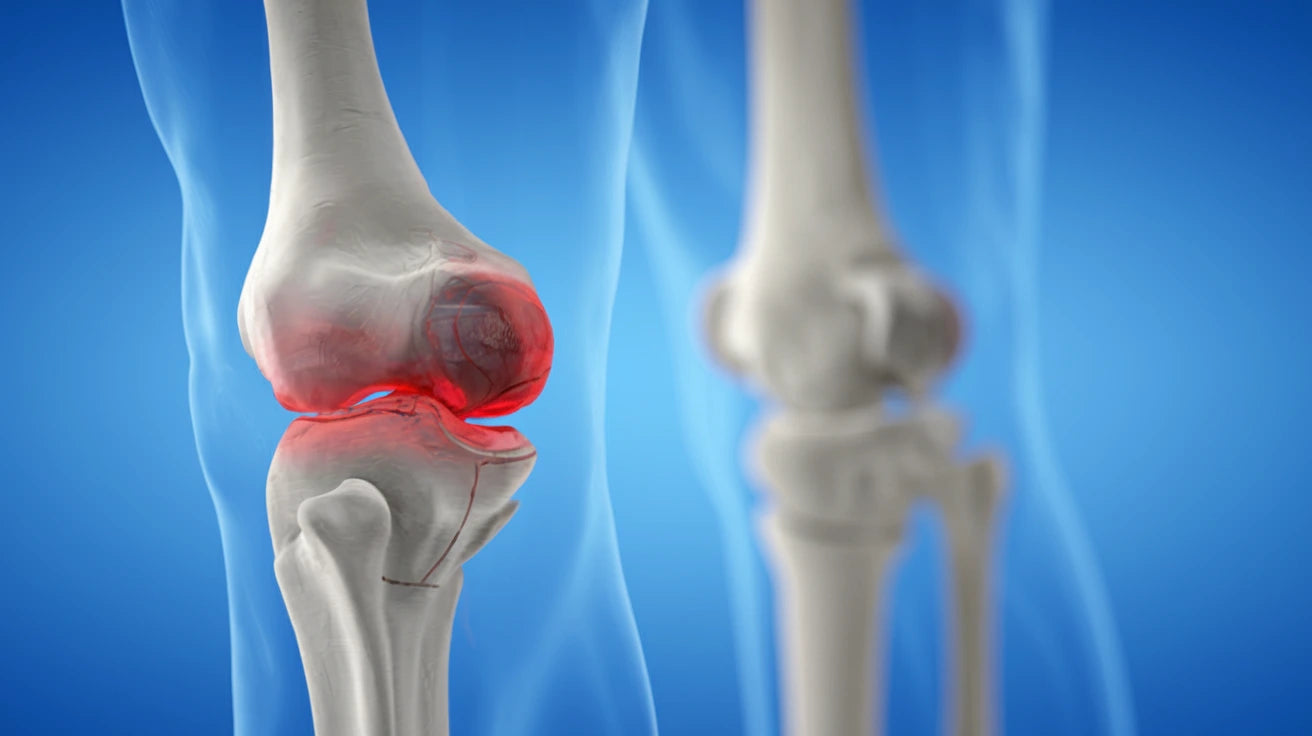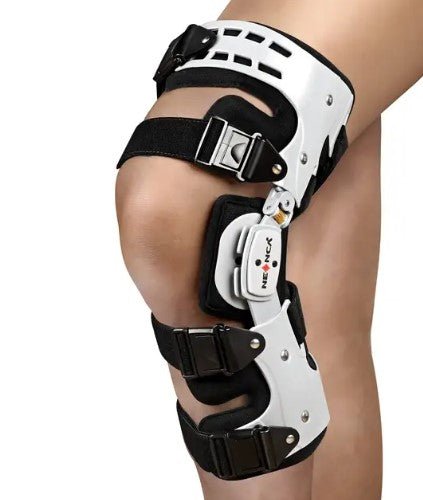Osteoarthritis in the Knee: Symptoms, Causes, and Treatment

Knee osteoarthritis, also known as knee osteoarthritis or gonarthrosis, is a common joint disease that affects many people, especially the elderly. In this article, we will review the most common symptoms, causes behind the condition, and effective treatment methods, including the use of specially designed knee pads.
Common symptoms of osteoarthritis in the knee
Osteoarthritis of the knee develops gradually and can manifest itself in several different ways. At first, the symptoms may come and go, but over time, the symptoms often become more noticeable.
The most common sign of osteoarthritis is knee pain, especially with movement or strain — for example, when climbing stairs, getting up from a sitting position, or walking long distances. Many people also experience stiffness in the morning or after sitting still for a long time, which usually improves with movement.
Other common symptoms include:
- Swelling in the knee joint, which can occur after activity due to inflammation.
- Popping and cracking sounds when the knee is bent or extended.
- Reduced mobility – it may be difficult to fully extend or bend the leg.
- Instability, where the knee feels weak or like it “gives way” when walking.
It is also common for the pain to vary in intensity. Some days may feel almost pain-free, while others are characterized by stiffness and aches. In more advanced osteoarthritis, the pain may also occur at rest and disrupt sleep.
Causes of osteoarthritis in the knee
Osteoarthritis occurs when the cartilage in the knee joint gradually breaks down, reducing the cushioning between the bones and leading to friction, inflammation and pain. Below are the most common reasons why osteoarthritis develops:
- Age: The risk of developing osteoarthritis in the knee increases with age because the cartilage becomes less elastic and more difficult to recover.
- Overweight: Extra body weight puts strain on the knee joints and accelerates the breakdown of cartilage.
- Previous injuries: Meniscus or cruciate ligament injuries can disrupt the stability of the joint and increase the risk of developing osteoarthritis in the long term.
- Genetics: Hereditary factors play a role – some people have a genetic predisposition to developing osteoarthritis.
- Overload: Repetitive movements and heavy loads, for example during work or sports, can cause minor injuries that over time lead to osteoarthritis.
When a doctor suspects osteoarthritis, a thorough examination is performed, often including X-rays of the knee joint. The images show changes in the cartilage and joint surfaces, which are the basis for the diagnosis. The doctor also takes into account the patient's medical history, mobility, and pain level to create an individual treatment plan.

Knee pads for osteoarthritis
Knee braces for osteoarthritis from Komforten are designed to relieve pain and improve mobility in osteoarthritis. They offer several benefits:
- Relieves the joint: Reduces pressure on the affected area.
- Compression: Reduces swelling and inflammation.
- Stability: Improves knee stability and reduces the risk of injury.
- Blood circulation: Promotes healing and reduces inflammation.
- Long-term relief: Regular use provides lasting relief.
The knee brace combines support and comfort, perfect for everyday use. Knee brace for osteoarthritis is designed to provide optimal support without restricting mobility unnecessarily, making it suitable for everyday use. These aids can be adapted to the individual's needs and can serve as a valuable complement to other treatment. The knee brace is an excellent aid even for people with unstable knees , as it provides safety and support in everyday life.
Buy nowPreventive measures
To reduce the risk of developing or worsening osteoarthritis in the knee, it is recommended:
- Regular, customized training where the exercises strengthen the muscles around the knee
- Maintaining a healthy weight to avoid putting unnecessary strain on the joints
- Use of supportive shoes and possibly an insole that relieves pressure
- Avoiding activities that put a lot of strain on the knee for extended periods of time
Each person affected by osteoarthritis has a unique situation, and treatment should be tailored to the individual's specific needs and medical history. If you experience early symptoms of pain and stiffness in the knee, especially after rest, it is a good idea to check for back-related problems affecting the knee.
Conclusion
Knee osteoarthritis is a common condition that can significantly impact quality of life. By paying attention to symptoms, seeking early treatment, and using supportive devices such as knee braces, many people with knee osteoarthritis can improve their condition and maintain an active lifestyle.
It is important that the treatment plan is specific and tailored to the individual's needs and medical history. A holistic approach that combines different treatment methods often provides the best results. Remember to consult a doctor or physiotherapist for an individual assessment and treatment plan. You can also read about how bursitis in the knee is sometimes confused with osteoarthritis.
Frequently Asked Questions (FAQ)
Can osteoarthritis of the knee be cured?
Osteoarthritis cannot be completely cured, but the symptoms can often be significantly alleviated with the right treatment and aids such as Knee Support for Osteoarthritis.
How quickly can I expect results when using Knee Support for Osteoarthritis?
Many users report an immediate feeling of support and some pain relief. For long-term results, regular use is recommended in combination with other treatment methods.
Can I use Knee Pads for Osteoarthritis during exercise?
Yes, Knee Protector for Osteoarthritis is designed to be used both during activity and in everyday life, making it suitable for training adapted for people with knee osteoarthritis.

